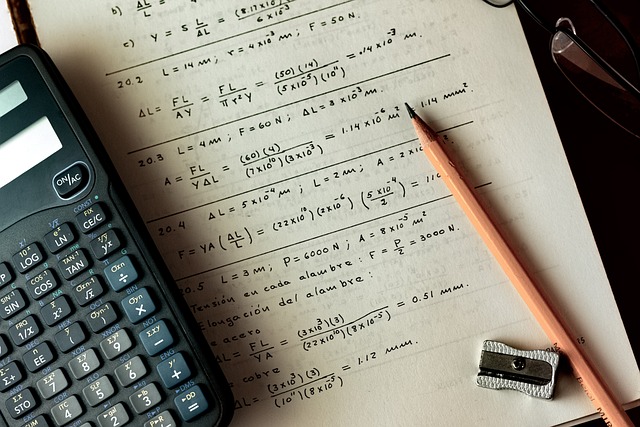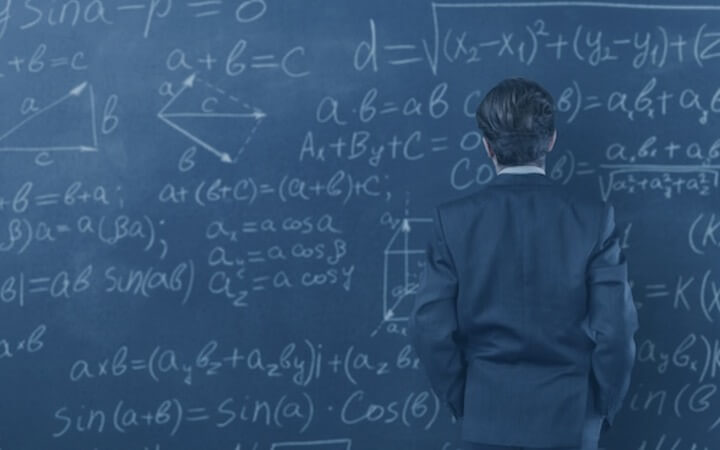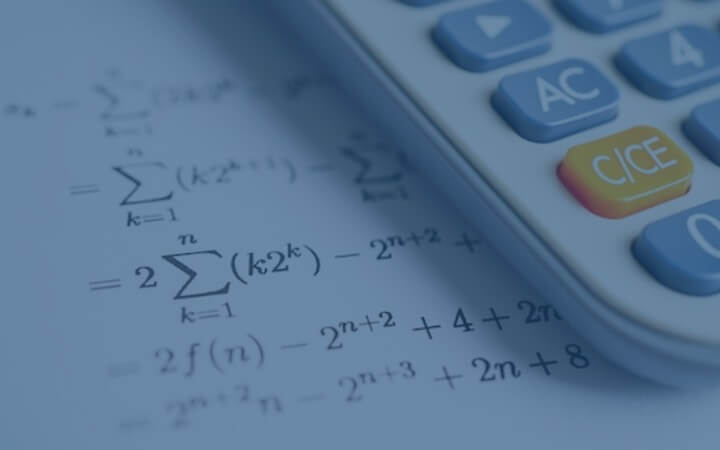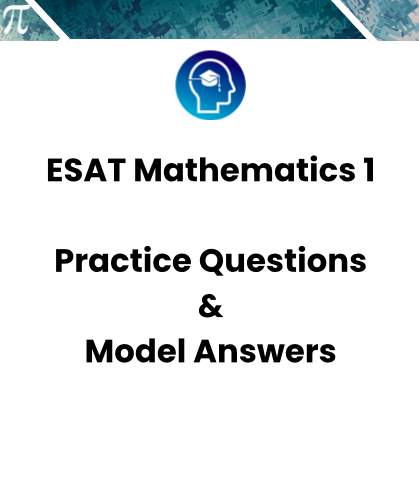
The introduction of the Engineering and Science Admissions Test (ESAT) by Cambridge University and Imperial College London has added a new dimension to the admissions process for prospective engineering and science students.
The ESAT Math sections are designed to assess the mathematical aptitude and problem-solving skills of applicants, making it essential for them to understand the nature of the test and prepare accordingly.
This article aims to provide a comprehensive guide to help students navigate the preparation process for ESAT Mathematics, offering insights, strategies, and resources to ensure they are well-prepared and confident on exam day.
What is the ESAT?
The ESAT (Engineering and Science Admissions Test) is a newly introduced 2-hour exam, established in 2024, that plays a crucial role in the admissions process for several prestigious courses at the University of Cambridge and Imperial College London. This exam has been designed to assess the aptitude of prospective students in the fields of engineering and science, replacing the previous NSAA and ENGAA exams while retaining the core focus on mathematics and scientific disciplines.
Test Format
The ESAT is divided into five parts, with each part lasting 40 minutes and containing 27 multiple-choice questions. The structure of the test is as follows:
- Mathematics 1: This section is mandatory for all candidates.
- Biology
- Chemistry
- Physics
- Mathematics 2: Required for some courses (refer to the table below).
Courses will require candidates to answer Mathematics 1 and up to two additional parts. It is essential to select the relevant parts during registration, as changes cannot be made at the test centre.
The ESAT is scheduled to take place between the 15th and 17th of October 2024 and 7th and 8th January 2025 at Pearson Vue centres worldwide, providing aspiring students with an opportunity to demonstrate their academic abilities and secure a position at one of the top universities.
Who Needs to Take ESAT Math 2?
To determine whether you need to take ESAT Maths 2, refer to the table below:
| Course | University of Cambridge | Imperial College London |
| Aeronautics | X | ✔ |
| Chemical Engineering | X | ✔ |
| Civil and Environmental Engineering | X | ✔ |
| Dyson School of Design Engineering | X | ✔ |
| Electrical and Electronic Engineering | X | ✔ |
| Mechanical Engineering | X | ✔ |
| Physics | X | ✔ |
| Chemical Engineering and Biotechnology | ✔ | X |
| Engineering | ✔ | X |
| Natural Sciences | ✔ | X |
| Veterinary Medicine | ✔ | X |
Note: ✔ indicates that Mathematics 2 is required for the specified ESAT course, while X indicates that it is not required.
How to Prepare for ESAT Math

Preparing for the ESAT Math sections can seem daunting, but with a strategic approach, you can maximise your performance and approach the test with confidence. Below are some comprehensive tips to help you prepare effectively for both Mathematics 1 and Mathematics 2 sections of the ESAT.
1. Understand the Test Format
The ESAT consists of five parts, each lasting 40 minutes and containing 27 multiple-choice questions. Most courses will require candidates to answer Mathematics 1 and two additional parts. Make sure you are aware of which sections are required for your chosen course. Here is a breakdown of the Mathematics sections:
- Mathematics 1: Compulsory for all candidates.
- Mathematics 2: Required for specific courses.
Refer to the course pages of the institutions to which you are applying to find out which parts of the ESAT are required. It will not be possible to make changes at the test centre.
2. Build a Study Plan

Creating a structured study plan is crucial. Allocate time for each topic and stick to your schedule. Your study plan should include:
- Topic Review: Focus on core mathematical concepts covered in the test.
- Practice Tests: Regularly take timed practice tests to build familiarity and improve time management.
- Review Sessions: Dedicate time to review and understand mistakes made in practice tests.
Sample Study Plan:
Here’s a sample weekly study plan to help you get started:
| Day | Activity | Time Allocation |
| Monday | Review Mathematics 1 Topics | 2 hours |
| Tuesday | Practice Mathematics 1 Questions | 1.5 hours |
| Wednesday | Review Mathematics 2 Topics | 2 hours |
| Thursday | Practice Mathematics 2 Questions | 1.5 hours |
| Friday | Take Timed Practice Test (Maths 1) | 1 hour |
| Saturday | Review Practice Test Mistakes | 2 hours |
| Sunday | Rest, & have fun! | – |
3. Use a Variety of Resources
While the ESAT is new, there are plenty of resources from previous admissions tests (like NSAA and ENGAA) that you can use for practise. Here are some recommendations:
- For Maths Questions: UKMT Maths Challenges, previous Cambridge NSAA and ENGAA papers.
- For Physics Questions: Isaac Physics, British Physics Olympiad, Professor Povey’s Perplexing Problems.
- For Chemistry and Biology Questions: Cambridge Chemistry Challenge, British Biology Olympiad.
4. Practise Under Timed Conditions
Simulate the exam environment by taking practice tests under timed conditions. This will help you get used to the pace of the exam and improve your time management skills. Aim to complete each practice section in the allotted 40 minutes.
5. Focus on Weak Areas
Identify and focus on your weak areas. Spend extra time reviewing and practising these topics. Seek help from teachers or tutors if needed.
6. Take Advantage of Free Practice Materials
Starting May 2024, Cambridge and Imperial will release free practice materials. Use these resources to get a better understanding of the test format and the types of questions you will encounter.
7. Get Expert Help
Consider seeking help from expert admissions test tutors. At Oxbridge Mind, we have experienced ESAT tutors who can provide personalised guidance, mark your practice tests, and give you detailed feedback. Our tutors, many of whom are graduates of top universities, can help you understand what Cambridge and Imperial are looking for in successful applicants.
8. Stay Healthy and Positive
Ensure you maintain a healthy study-life balance. Take regular breaks, eat nutritious food, exercise, and get plenty of sleep. A positive mindset will boost your confidence and performance on the test day.
Final Thoughts
Preparing for the ESAT Maths sections requires dedication and a strategic approach. By understanding the test format, creating a study plan, practising regularly, and seeking support when needed, you can maximise your chances of success. At Oxbridge Mind, we are committed to helping you achieve your academic goals. Our experienced tutors can provide the personalised guidance you need to excel in the ESAT and secure a place at your desired university.
If you need tailored support or more information, reach out to our expert ESAT tutors and take the first step towards your success. Don’t leave your future to chance – let us help you achieve your potential!
Frequently Asked Questions About ESAT Maths Preparation
How important is time management when preparing for the ESAT Math sections?
Time management is crucial when preparing for the ESAT Maths sections. Each section of the ESAT is timed, with 40 minutes allocated for 27 multiple-choice questions. This means you have less than two minutes per question, which requires quick thinking and efficient problem-solving skills. To improve your time management, practise under timed conditions regularly. This will help you become familiar with the pressure of the exam and enable you to develop strategies to allocate your time effectively during the test.
Are there any specific topics in Mathematics that are emphasised more in the ESAT?
The ESAT Math sections cover a broad range of topics commonly found in advanced high school curricula, including algebra, calculus, geometry, and statistics. However, the exact emphasis can vary depending on the specific section (Mathematics 1 or Mathematics 2) and the requirements of the course you are applying for. Reviewing past papers from similar exams and consulting with your teachers or tutors can give you insights into which topics might be more heavily weighted. Additionally, focusing on core mathematical concepts and their applications will provide a strong foundation for tackling a variety of questions.
How can I effectively use practice materials to prepare for the ESAT Mathematics sections?
Effective use of practice materials involves more than just completing practice questions; it’s about understanding your strengths and weaknesses. Start by taking a diagnostic test to identify areas that need improvement. Then, create a study plan that allocates time for focused practise in these areas. Use a variety of sources for practice questions, such as past papers from similar exams, online resources, and textbooks. After completing practice tests, review your answers thoroughly to understand your mistakes and learn the correct approaches. Regular feedback from teachers or tutors can also be invaluable in guiding your preparation.
Can I use a calculator during the ESAT Maths sections?
The use of calculators during the ESAT Math sections is not allowed. This means you must rely on your mental maths skills and manual calculations. Therefore, it’s essential to practise solving problems without a calculator to build your confidence and accuracy. Familiarise yourself with common mathematical techniques and shortcuts that can save you time during the exam. Additionally, ensure that you are comfortable with the arithmetic and algebraic manipulations required for various types of problems.
How should I balance my preparation for Mathematics 1 and Mathematics 2 if I need to take both?
Balancing your preparation for Mathematics 1 and Mathematics 2 requires a strategic approach. Start by understanding the syllabus and format of each section, as the content and difficulty level might differ. Create a study schedule that allocates sufficient time to both sections, ensuring you cover all necessary topics. Focus on building a solid understanding of fundamental concepts before moving on to more advanced topics. Regularly alternating between the two sections in your practice sessions can help maintain a balanced preparation and prevent burnout. Seeking guidance from experienced tutors can also help tailor your study plan to meet the specific demands of both sections.
What are some common mistakes to avoid when preparing for the ESAT Mathematics sections?
One common mistake is neglecting to practise under timed conditions, which can lead to difficulties managing time during the actual exam. Another mistake is focusing too much on easy or familiar topics while ignoring weaker areas. It’s important to address all parts of the syllabus comprehensively. Additionally, many students overlook the importance of reviewing their answers and learning from their mistakes. Regularly analysing practice test results and understanding why errors were made can significantly improve performance. Lastly, some students rely solely on self-study and miss out on valuable feedback from teachers or tutors, which can provide critical insights and improve preparation efficiency.

